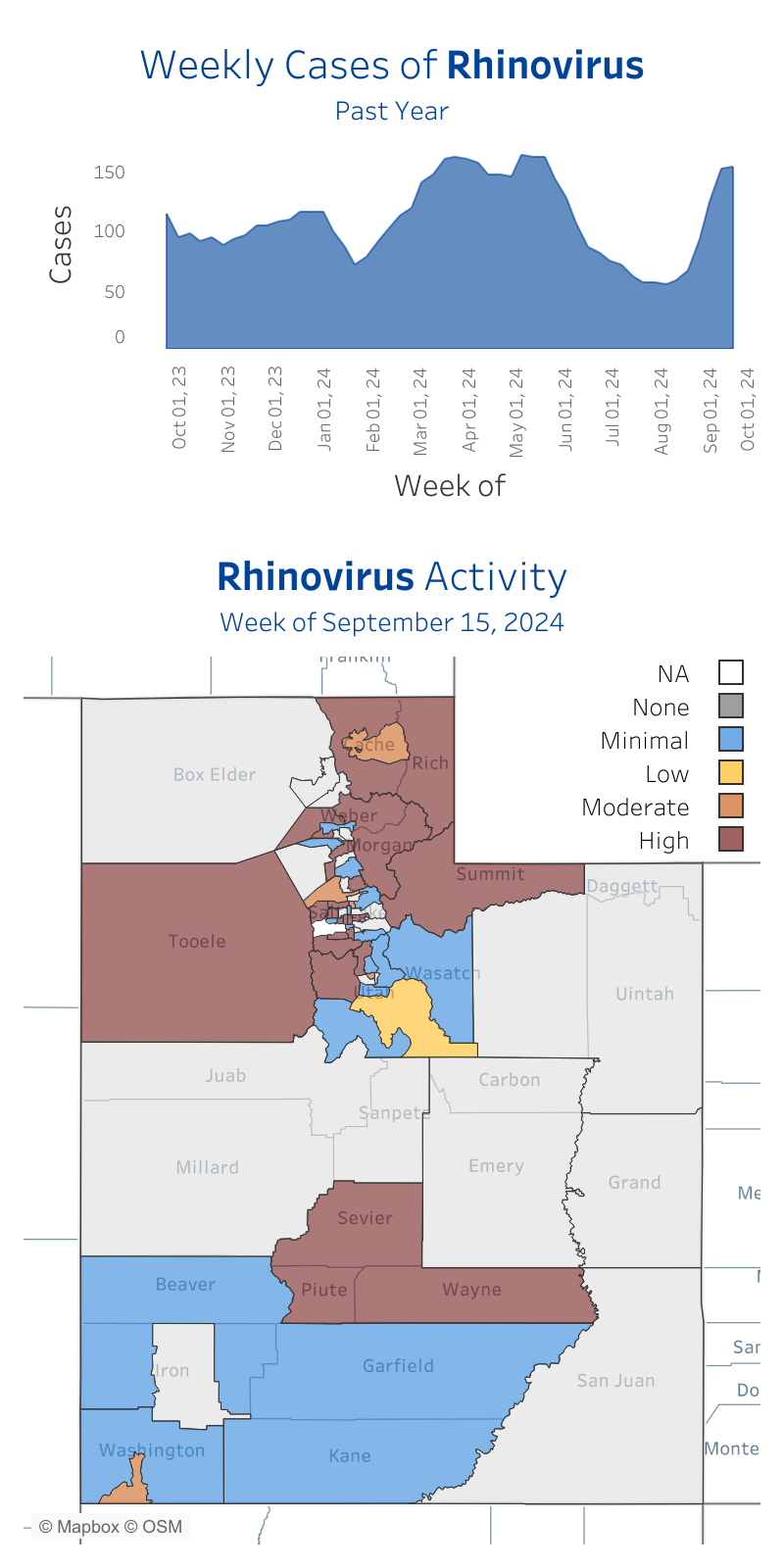Germ Profile
Also Known As: Common cold
Germ Type: Virus
Season: Winter, spring, summer, fall
Rhinovirus is the main culprit behind the common cold. Illness usually starts with a runny nose, sore throat, and sneezing and may go on to include headache, cough, and muscle aches. Most rhinovirus infections are mild, but they can sometimes lead to bronchiolitis and pneumonia – especially in babies.
Seasonality
In Utah, rhinovirus circulates year-round, but is most active in the winter months.

Signs and Symptoms
Rhinovirus can bring on all of the familiar symptoms of a cold: runny nose, sneezing, sore throat, headache, cough, and body aches. In some people, it can cause a mild fever, and may also lead to ear infections or sinus infections. In babies and young children, lung problems such as bronchiolitis and pneumonia sometimes develop.
Infection Period

How It's Spread
Rhinovirus spreads easily from one person to another. The spray from a sick person’s cough or sneeze is a big contagion risk – and so are handshakes, high-fives, and nose-tweaks from that person. (Anyone with rhinovirus is likely to have “germy” hands from rubbing or blowing their nose.) And since rhinovirus can live on surfaces for a while, anything that has been touched by the infected person – clothes, toys, utensils, furniture – can also transmit the virus.
Diagnosis and Treatment
Providers usually diagnose rhinovirus by taking a medical history and doing a physical exam. If illness is severe, the provider may choose to verify the diagnosis by testing a sample of mucus.
As with many other viruses, treatment for rhinovirus usually means managing the symptoms until the infection clears. (There’s no commonly used treatment that acts on this group of viruses.) However, bronchiolitis, pneumonia, or other complications of rhinovirus infection may require medication and monitoring.
What can I do today?
1) Practice prevention and stop the spread:
- Wash your hands often and well – and have children do the same. (Give special attention to post-potty and pre-meal hand washing.)
- Regularly wipe down tables, toys, and other objects and surfaces.
- Cover your sneezes and coughs.
- Use a tissue once, then throw it away and wash your hands.
2) Call your child’s doctor if you notice:
- Wheezing (a whistling sound when breathing in or out).
- Fast breathing (more than 40 times a minute) or very difficult breathing (retractions, or using the stomach muscles when breathing).
- Fever that lasts longer than 3 days – or fever higher than 100.2°F in an infant 3 months or younger.
- Fussiness, poor eating, sleepiness or low energy in a baby.
- Signs of an ear infection – complaining about ear pain, tugging or rubbing the ear, etc.
- Any other severe symptoms or symptoms that last longer than 7 days.
Disclaimer: The contents of this website are not intended to be a substitute for professional medical advice, diagnosis, or treatment.